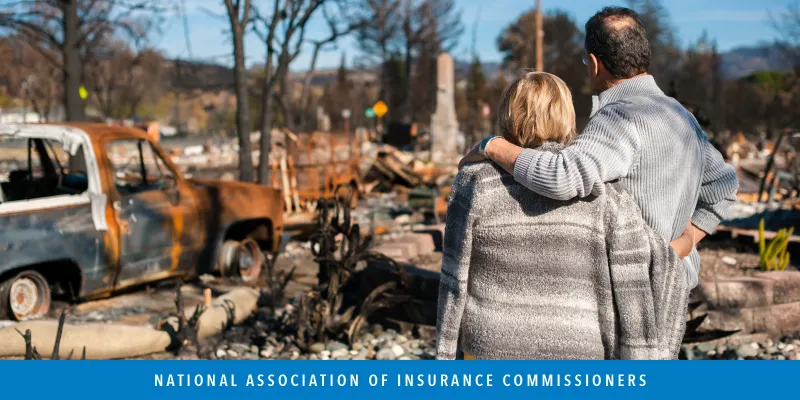
Protect Your Home From Wildfires: Take These Steps to Mitigate Your Risk
Wildfires can travel at speeds up to 14 miles per hour. Vegetation loss and erosion from wildfires can even cause flooding, creating problems with transportation, gas, power and communication. But homeowners can reduce their wildfire and flooding risks by “hardening” their homes and creating a defensible space around their homes.
TOP CONSIDERATIONS
Wildfires can happen anywhere, anytime, either naturally or from human error. Wildfire risks increase with little rain and high winds. Wildfires are most common in the West, where heat and drought create favorable wildfire conditions. However, uncontrolled fires can and have occurred in most of the 50 states. According to the National Interagency Fire Center (NIFC), there were wildfires reported in every state, except Delaware, Puerto Rico and the District of Columbia, in 2018. If you are under a wildfire warning, get to safety immediately. If you are trapped, call 911.
Flying embers can destroy homes. According to the Insurance Institute for Business & Home Safety (IBHS), during wildfires, approximately 90% of buildings damaged were first ignited by embers or other fires set by embers. Because of the danger of embers, close proximity of homes and presence of combustible features increase the chances of a home going up in flames.
Homeowners policies usually cover the repair or replacement of the built structure of your home and items damaged by flames, smoke, soot and ash. Your insurance company may ask for an inventory of the items in your home at the time of the loss. Use the NAIC home inventory app as an easy way to prepare. Homeowners insurance is not designed to cover damages to your car. A comprehensive car insurance policy will insure your car against fire damage.
THINGS YOU SHOULD KNOW
There are steps you can take to protect your home from wildfires.
Create defensible spaces. Defensible space is the buffer you create between your home or a building and the grass, trees, shrubs and any wildland area surrounding it. According to Ready.gov, defensible space should be up to 200 feet from a structure. Create defensible space around trailers, recreational vehicles (RVs) and storage sheds. Maintaining a defensible space is essential to improving your home’s chance of surviving a wildfire.
Use noncombustible materials in your home and structures. Maintain 6-inch ground-to-siding clearance, and consider noncombustible siding. Use Class A fire-rated roofing products. Use noncombustible fences and gates. Burning fencing can generate embers and cause direct flame contact to your home. Use 1/8-inch mesh to cover vents, and box in open-eaves to create soffited eaves. Use multi-pane, tempered glass windows, and close them when a wildfire threatens. Use deck boards that comply with requirements for new construction in wildfire-prone areas, and remove combustibles under deck. Costs vary for retrofitting existing homes, with some components, such as roofs and walls, potentially being expensive. There are smaller projects that can be implemented at relatively low costs like gutters and defensible landscaping. In terms of new construction, a study by the IBHS and Headwater Economics shows there is not much difference in building costs.
Clear debris. Clear debris from your roof and gutters regularly, as debris can be ignited by wind-blown embers. Gutter covers should be noncombustible. Remove shrubs under trees, prune branches that overhang your roof, and remove dead vegetation around your home.
TOP THREE THINGS TO REMEMBER
- Wildfires can happen anywhere and can be started by humans, or they can occur naturally. They are not limited to any one geographic area.
- Harden your home to mitigate your risks and protect your home from wildfires.
- Make sure your homeowners insurance policy is up to date, and understand what is covered and what is not. Create a home inventory of your possessions.
About the National Association of Insurance Commissioners
As part of our state-based system of insurance regulation in the United States, the National Association of Insurance Commissioners (NAIC) provides expertise, data, and analysis for insurance commissioners to effectively regulate the industry and protect consumers. The U.S. standard-setting organization is governed by the chief insurance regulators from the 50 states, the District of Columbia and five U.S. territories. Through the NAIC, state insurance regulators establish standards and best practices, conduct peer reviews, and coordinate regulatory oversight. NAIC staff supports these efforts and represents the collective views of state regulators domestically and internationally.
